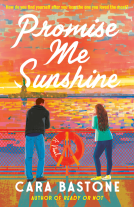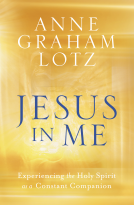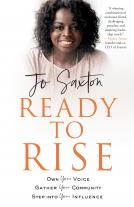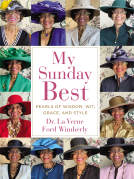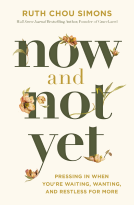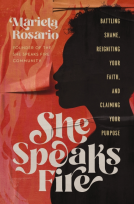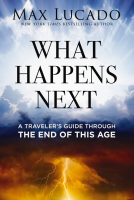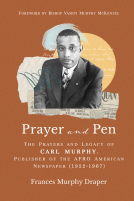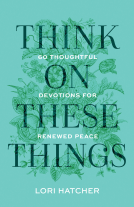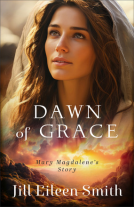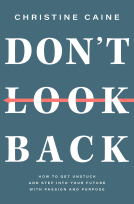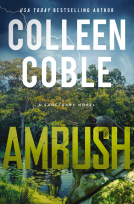
Illuminating Women in the Medieval World
by Christine Sciacca
This title was previously available on NetGalley and is now archived.
Send NetGalley books directly to your Kindle or Kindle app
1
To read on a Kindle or Kindle app, please add kindle@netgalley.com as an approved email address to receive files in your Amazon account. Click here for step-by-step instructions.
2
Also find your Kindle email address within your Amazon account, and enter it here.
Pub Date Jun 20 2017 | Archive Date Nov 01 2017
Getty Publications | J. Paul Getty Museum
Description
Featuring over one hundred illuminations depicting medieval women from England to Ethiopia, this book provides a lively and accessible introduction to the lives of women in the medieval world.
Available Editions
| EDITION | Hardcover |
| ISBN | 9781606065266 |
| PRICE | $24.95 (USD) |
| PAGES | 120 |
Featured Reviews
This review is for the ebook of this title. My main recommendation would be to buy this book in print or to read it on a colour tables or Ereader that can process pictures better. I think I missed out on alot of the enjoyment of this book as my Kindle is a simple model.
Aside from that, this book was amazing. It blew open all the preconceived ideas we have about women in the middle ages. Not all women were damsels or witches or peasant women with children hanging off them, no women had a place and role in society. It was a perfect book for the current headlines of women smashing glass ceilings. Apparently we've been doing it since the middle ages, but history didn't want us to know.
Grab this book for a flick through, a conversation starter or to while away a weekend with a few classes of wine and an eye opening lesson.
 Geoffrey S, Librarian
Geoffrey S, Librarian
This is an absolutely beautiful book that is both a treat to art and history lovers alike (and of course, art history fans will be double pleased!)
 Reviewer 311786
Reviewer 311786
I really enjoyed the illustrations in this book and would love to have gone to the exhibition where they were displayed. Each image shows a woman, or was created by a woman. The images range from religious scenes to mythical figures to portraits of the owner, and all are fascinating.
The accompanying text points out repeated themes and motifs, as well as elaborating on the stories of the women pictured in them, and the women who commissioned or illustrated them. It isn't particularly in-depth, but the "point" of this book is certainly the images, which are worth studying for the intricate artwork.
This book is full of beautiful illustrations from illuminated manuscripts. There is some text explaining each one, but I was in it for the artwork.
A beautiful and informative book of women in medieval times, and their representations in art and books, as well as their influence in the making of said books and art.
A lovely exploration of women in Medieval art - it was great to get past the more traditional ideas of who was represented and why.
 Educator 127278
Educator 127278
I received the book in .pdf format as an advance copy in exchange for a fair review, my thanks to Netgalley and Getty Publications.
I can honestly say I am impressed by the quality of the volume and the way the author has presented and laid out book. The illustrations are very good and the supporting text sufficient to wet the appetite to read all and find out more. A well earned five stars and I will be buying the hardback at Christmas for my partner.
 Sarah F, Reviewer
Sarah F, Reviewer
This is a beautiful book, in which the images are well supported by the text. The majority of manuscripts covered are of Western European origin and Christian in focus, but Ethiopian and Persian manuscripts are also represented, as are a number of beautifully-illuminated works in Hebrew. All the major female saints are covered, along with donor portraits and female characters in popular romances. The text gives hints of information about the women who actually handled these manuscripts, either as patrons or as professional scribes and illuminators, and a section at the end of the book provides suggestions for further reading on the lives of women in the Middle Ages. Experts may find little that is not already covered elsewhere, but for a reader interested in learning more about women's history in an artistic context, this is an excellent place to start.
 sara m, Reviewer
sara m, Reviewer
A beautifully put together book. It was fascinating to see so many intricate illuminations from the period.
Definitely an exhibition to see!
 Sophie F, Librarian
Sophie F, Librarian
Brilliant and fascinating work! Design and layout are very clean and organised so the illuminations really pop out.
 Willy M, Reviewer
Willy M, Reviewer
This book is very comprehensive in looking at graphic depictions of women in medieval society. Using pictures from the Getty collection one gets a sense of the breadth of the life of Women in European society both east and west as well as in Ethiopia.
Its a very happy experience to see a greater range of depiction than one would have seen before in previous books on this subject. I would highly recommend the sumptuous volume of pictures to anyone interested in medieval life, the history of women or the development of art
 Konstantin F, Reviewer
Konstantin F, Reviewer
I was interested in reading this book since it first came out. The description, cover and reviews made it sound - if not groundbreaking, at least really insightful, opening a door into the lives that women led in medieval times. Sadly, I didn't seem to like it as much as everyone else did, but it is still a decent read with good illumination reproductions, who often turned out to be better than the text surrounding them.
The fact that I didn't enjoy Sciacca's small, treasury, half-illustrated encyclopedia is that I had known most to all of these things before and I'm not saying that lightly. I am not a medieval history expert or a reference librarian, but I've always had a big interest in history, and explored the subjects that especially interested me - lives of medieval women in the shadows of their more powerful and well-known husbands being one of them. Some of the sentences in this one struck me as simple, basic and unnecessary, such as this one: "Women were expected to give birth to children." or "Women did not play as large role in politics as much as they husbands did." To anyone having any previous knowledge, that would be obvious. And most of the topics depicted here often use a couple of repetitive words, sentences and especially phrases. "Role of women" and "it suggests/implies" were featured really prominently throughout.
The text didn't really depict the lives of medieval women or illuminations showing them. How, you may wonder? Let me explain. First of all, most of these are just Bible story illuminations and there is quite a few initials (big, full-colored letters with leaf swirl around it at the beginning of each chapter in the book of hours). And the author took to explain what fabric is Saint Hildegarde wearing, what house did that coat of arms belong to, who the artist might have been and what is the composition of the painting. And the focus on medieval women? Well, there is only a few (and by that, I mean no more than seven or eight) illuminations showing real medieval women doing their domestic, everyday work. Which is strange, as this book counts over a hundred reproductions. Women working in the field, at home, or actually doing their job with making and illuminating books of hours and gospels isn't really shown, nor did we got an insight into it. One of the texts following an image implies that the workshop's owner's wife <i>might</i> have been helping him craft a book, and nothing more. It ends on that. Just a brief note of something that might have been, but it is unsure whether it really happened or not. And if it did, we do not even learn what the woman (Jeanne)'s role might have been. Did she draw the painting, color it, scribe the text, or was just helping around while her husband and the apprentices did the hard work? Christine Sciacca offered no answer to that question.
And about my favorites... Virgin Mary receiving message from Archangel Gabriel in a typical 16th century Flemish household (with windows, tables, tapestries, everything looking authentic - just not for the bible story) made me dead laugh. Now, that must have been relatable to the book of hours' owners! And there is another, where Mary meets Elizabeth and both women share the news of their miraculous pregnancies - in a medieval French village, with the almost fairy tale aesthetic rooftops and haymakers in the field. Loved that one as well.
All in all, this is a little disappointing, but not a quite disatisfying read. Just regard it as being a little longer tourist/museum brochure, with nice reproduction of the paintings you'll see and where they may originate from - a lot of time is spent following clues of what the owner's name might have been, in the cases it is not known; for example, daisies (<i>marguerites</i> in French) imply that the owner's name might have been Margaret, etc. - and you'll end up liking it. Recommended to those with a specific interest in illuminations, medieval texts and art or the ones who'd like to get a basic viewpoint of medieval women's lives. Interesting, but not quite educating or referencial.
My first ARC from NetGalley, but I hope not to be the last!
 Susan D, Reviewer
Susan D, Reviewer
Very interesting exposition on some 100 illuminations gathered together for an exhibition at the Getty Museum this year. The purpose: to show the place and roles of medieval women revealed in these small works of art. They are beautifully reproduced here. The place of the medieval women can be inferred from the ownership and creation of the original books themselves. This work's stated purpose is to increase insight into the daily lives of medieval women. Among the basics found: that women, at least wealthy women, owned, commissioned and sometimes even produced these works. While men dominated in other areas of the arts, women did have a major role in creating illustrated manuscripts, books of hours. Subjects included the lives of the saints, stories from the bible, scenes from life. There are scenes depicting medieval women with angels interceding for them with Mary or Jesus. There is even a scene of childbirth. Religion is the center of life and women are the center for carrying belief forward.
Whether a book such as this will interest a reader will depend on may things: are you open to religious art, for that is what much of these illuminated manuscripts are; do you simply enjoy medieval art; are you interested in the art of or for women of medieval times and how it may express their lives? If the answer to any of these questions is at all positive, you should check out this book
A copy of this book was provided by the publisher through NetGalley in return for an honest review.
 catherine h, Reviewer
catherine h, Reviewer
I've always thought boos and stories about women in other ages were interesting to read about. A Distant Mirror comes to mind as one of the first I read ages ago and was hooked! I thought this was a nice overview with short bios of many women, saints, scholars, everyday women and royals. Not a bad read, just not highly retailed or analyzed. The illustrations look good- copies of illuminated pages from books- and interesting in themselves.
 Marian W, Reviewer
Marian W, Reviewer
This is a simply wonderful book which examines the role of women in the male-dominated and highly religious medieval world, telling the story through fabulous illuminated manuscripts drawn from the Getty Museum's manuscript collection. These manuscripts come from across Europe and the Mediterranean and the they are exquisite. They illustrate the varying roles of women - the positive roles of wife, mother, nun and the negative images such as the Whore of Babylon and Eve. They also reflect noblewomen with some power and influence who could deploy their social and political skills either overtly or through more subtle actions as well as images of women of lower social status attending to work in agricultural activities (idealised of course - there is no sign of poverty or squalor). In particular, the life of the Virgin Mary, the ultimate female role model in medieval society, figures prominently in many of the manuscripts, together with the lives of other saints and figures from the Hebrew bible such as Judith & Holofernese, although some figures more contemporary with the painters of these manuscripts also appear.
What a wonderful book this was, full of beautiful Medieval Illustrations, with explanations and captions. It truly does 'Illuminate Women in the Medieval World', in their lives, work, social interactions, family life and attitude to religion.
A fascinating short, but a rich book for anyone interested in Medieval Women. This Medievalist would certainly treasure a copy.
Requested from the Publisher via Netgalley. I was not required to write a positive review and all opinions expressed are my own.
 Alison G, Bookseller
Alison G, Bookseller
This is a book that needs to be viewed in his-res, full colour. The example images of the illuminated manuscripts are the real treasure here - I loved seeing the detail and colour that went into these works. I'd almost have liked to see more, although I know the images presented were obviously very carefully chosen!
The subject of women in these texts was very interesting, and one that I didn't have a lot of prior knowledge on. Although the text of the work is short (this is not a long book by any means) it gave a good introduction to several female biblical figures, and the cultural background behind the creation of these texts. This book is like an appetizer meant to pique your interest on the subject - and it does that very well! After finishing the book (and going back through it again to do a second/third viewing of all the illustrations) I embarked on a wikipedia research journey to delve a little bit deeper into the Book of Hours and see more examples of this kind of illuminated work!
 Karen L, Reviewer
Karen L, Reviewer
A beautiful and informative book about women in the mediaeval world I read this on Kindle so didn't have access to colour plates but will be buying the boat for the plates because even in black and white they are amazingly detailed I've read a great deal about mediaeval men and women but this book brings across just how strong these women were and they had the same hopes and dreams that we do today it completely relevant even now I would recommend this book to anyone that has an interest in art or history or women in general absolutely wonderful book I cannot recommend it enough also my congratulations to the author for bringing these women alive so vividly
 Librarian 65579
Librarian 65579
Gorgeously illustrated with depictions of women from Christian, Jewish and Eastern manuscripts, this short book(let) gives a brief history of women as they were shown in various guises, from saints to sinners. As there is so little material about women in medieval times generally, this was a fascinating glimpse into this era. I would have liked it to be longer, but it was written to accompany an exhibition at the Getty Museum and thus somewhat brief.
Review of a digital copy from the publisher.
 Account D, Reviewer
Account D, Reviewer
Im actually planning on buying a physical copy of this book-- really interesting historically, and a lovely book all round.
 Lisa S, Reviewer
Lisa S, Reviewer
This is a beautiful book which is worth buying for the luminous images of the medieval manuscripts but it is also a fascinating look into the world of the women in this era.
Medieval women are usually thought of as being idle and wealthy, damsels in distress, nuns or prostitutes. The truth is very different. Women played a big role in the economy. Merchant's wives sold their crafts at markets and participated in the trade of goods and poor man's wives worked in the fields. Aristocratic women often commissioned manuscripts, became patrons of art and the higher-ranking ones even played a part in negotiations. Saint Hedwig, for example, had seven children, assisted her husband, a former duke, with peace negotiations, and after she and her husband made vows of chastity, she sponsored religious houses and cared for the poor. She is also supposed to have performed miracles so she became a saint.
Some women, such as Christine de Pisan, Helouise and Hildegarde of Bingen, also played important roles in the arts. Christine de Pisan and Helouise wrote while Hildegarde composed wonderful music, amongst other things. Other women illuminated manuscripts themselves or had their own images or words placed in works that they commissioned.
This book covers a wide range of topics, such as how women were viewed, the ideal women,'bad' women and marriage and courtly love. Each chapter contains manuscripts illustrating these subjects. Although piety and obedience were regarded as virtues, I liked the fact that strong-willed and courageous Biblical women, such as Judith who slayed an Assyrian general in his sleep to save her people, were also greatly admired.
This is a must-read for anyone interested in medieval women.
I received this free book from Net Galley in return for an honest revie
 Account D, Reviewer
Account D, Reviewer
A short book featuring many lovely images from the Getty Museum, for which it was commissioned. The book assumes no prior knowledge of medieval women in illuminated manuscripts and therefore offers a good introduction to the topic but may not offer much new information to someone already well versed in this area. However the illuminations more than make up for this, the book includes many excellent examples from all over the world and from a variety of different sources such as paintings, tapestries, manuscripts, prayer books, and other works commissioned by female patrons. I found it very enjoyable to look through and would thoroughly recommend it to anyone with an interest in this area.
 Daphne S, Reviewer
Daphne S, Reviewer
Clear concise text, gorgeously decorated illuminations and short simple stories of female saints revered for their piety, what's not to like in this book? This shows us how women were considered in the Middle Ages and attempts to show that then, as now, we're a complicated bundle of emotions, and men struggled to define us then and now!
Poorer working women were often considered the most fortunate of the sisterhood as they were capable of earning their own money and had more freedom in how they lived their lives. They spun wool, washed laundry, were barmaids and became prostitutes. They worked in the fields alongside the men and married and took charge of the house and the children. On the down side, they could be committed to a nunnery due to unwanted pregnancy and loose morals, lack of dowry or in order for the husband to get control of a large fortune.
Richer women were able to educate their daughters and found schools and universities in their own name. They gave money to the poorest of society and through patronage enabled prayers to be said upon nearest and dearest passing from life, commission books to be printed and expensive jewellery to be created as gifts for family or courtly favours. Some women were trusted to rule the Kingdom whilst the King was away at war.
This book would be lovely for someone wanting to learn more about mediaeval society and the role of women. It is a basic introduction to this era and it explains the meanings behind these beautiful paintings. I have posted a copy of this review on Goodreads today.
 Leyla J, Reviewer
Leyla J, Reviewer
This book was interesting in the sense that it told the story of women in history, taken from the depiction and understanding of illuminating of the time. I really would have liked a little more about the actual art shown in the pictures. An good book for moment in history.
 Annelies B, Reviewer
Annelies B, Reviewer
This book will be a companion to the upcoming exhibition in the J. Paul Getty Museum.
It is a lovely picture book, especially for those of us who will not have the opportunity to visit the actual exhibition. The text will give you an elementary context for the illuminations, but does not provide in-depth scholarly insights.
It is a beautifully illustrated work, with carefully selected manuscripts to enhance each chapter which is depicted in the exhibition. We have topics covering the ideals of womanhood (Christian saints and martyrs), "warnings" on behaviour (adultery, wantoness), daily life (courtship, marriage, childbirth, death), women in the arts (artists and illuminators), and finally a small section on the renewed interest in women of history.
 Dee A, Reviewer
Dee A, Reviewer
Most people have a limited knowledge of women in the Middle Ages. This book by Christine Sciacca will open up many eyes. The publication is timed to coincide with the 2017 exhibition at the J. Paul Getty Museum in Los Angeles.
An illuminated manuscript is defined as a manuscript in which the text is supplemented with decorations. These could include initials, borders, and illustrations. Ms. Sciacca has divided her book into four sections, Medieval Ideals of Womanhood, Warnings to Medieval Women, Medieval Women in Daily Life, and Medieval Women in the Arts. The layout is wonderful, and almost turns the pages for readers. The balance between text and illuminations changes constantly, never allowing the eyes to tire.
The Middle Ages was a time when males dominated the church and state, and controlled much of what happened. However, there were women who thought differently, who were opposed to the “normal” order of things and had the courage to speak their minds. Many of the illuminated manuscripts present these women through the images and accompanying text. Not only are women featured, but many of the manuscripts were commissioned by female patrons as well as illuminated by women.
The script is informative, enlightening readers not only about each illumination but also offering a back history of some of the essential characters featured in the art. For anyone interested in the medieval life and the attitudes of those living during that time, this is an excellent book. Five stars.
My thanks to NetGalley for an advance copy of this book.
 Account D, Reviewer
Account D, Reviewer
Illuminating Women in the Medieval World seeks to challenge established stereotypical views of the roles and behaviours of medieval women. It does so by splitting the topic into various themes looking at ideals, fears, and realities of behaviours as well as the relationship women had with art, specifically manuscripts and illumination. Although the text itself provides some information, and at a level that anyone could follow, the true strength of this book is to be found in the images that have been chosen for inclusion. There is a great variety of illuminations included and they are reproduced on a large scale and with a high quality. The basic analysis alongside each image serves to enhance enjoyment.
This book is probably best suited to those with a layman's interest in medieval art and/or gender studies as it does presume no prior knowledge but, even for those with a more developed knowledge of this area, I feel that this would be a worthwhile text to pick up, if only for the examples included. It would also make a beautiful coffee table book!
 Michelle K, Reviewer
Michelle K, Reviewer
Illuminating Women in the Medieval World
by Christine Sciacca
Getty Publications
J. Paul Getty Museum
Arts & Photography , History
Pub Date 20 Jun 2017
I am reviewing a copy of Illuminating Women in the Medieval World through Getty Publications Netgalley:
Almost nine hundred years ago in Medieval France Abelard and Heloise d' Argentueil became lovers engaged in an ill fated affair.
Although Women formed an integral part of the Medieval World records of their achievements are few.
At the age of twelve Hedwig of Selsia married the future Duke Henry of Selsia she raised seven children one who died in battle.
Numerous female saints served as Models for both Men and Women I'm the Medieval World.
Catherine of Alexandria was a learned woman who refused to worship paagan idols.
Margaret of York was well renowned for her small but lavish collection of books.
Hildegard of Bergen was a twelfth century mystic who was famous for the visions she wrote down and were eventually published.
Jeanne de Montabason was a Pakistan Book Seller and illuminator.
I give Illuminating Women in the Medieval World was five out of five stars.
Happy Reading!
Illuminating Women in the Medieval World by Christine Sciacca
Pros: lots of colour illustrations, good explanations
Cons:
This is an examination of medieval women as depicted in illuminated manuscripts. There’s a short forward by Timothy Potts, the Director of the J. Paul Getty Museum, followed by the Introduction. There are four chapters: Medieval Ideals of Womanhood, Warnings to Medieval Women, Medieval Women in Daily Life and Medieval Women in the Arts. At the end there’s a short epilogue and some suggestions for further reading. The book is 120 pages, and there are 100 illustrations.
The chapters start with a short explanation followed by a large number of illustrations. Each image has a good descriptive explanation that often gives context and/or insights into the medieval mind. I was impressed to see an Ethiopian and a Persian image in the Ideals of Womanhood chapter, as well as a few Hebrew manuscripts represented. The images depict a wide variety of women from a good mix of sources. There are saints, Biblical scenes, scenes of romance, giving birth, patrons praying, etc. Some of the sources are book of hours, prayer books, hymnals, medical and history texts, a book of law codes, etc.
The Warnings chapter opens with a brief foray into nude female imagery and the male readership for whom those images were generally commissioned, something I had never considered before. There are several other interesting tidbits that give greater depth to the people who made and used the manuscripts.
I found this a wonderful read. It’s an introductory volume and so accessible to anyone interested in learning more about the middle ages and the role of women.
 Account D, Reviewer
Account D, Reviewer
Illuminating Women in the Medieval World by Christine Sciacca is a free NetGalley ebook that I read in early June.
Beautiful and symbolic imagery from paintings, tapestries, manuscripts, prayer books, and other works commissioned by female patrons. They each are capable of promoting the importance of beauty, piety, virtue, fidelity, devotion, and courtly love.
 Chloe C, Reviewer
Chloe C, Reviewer
Beautiful book! Great glimpse into the life of medieval women, including female saints. It was written in an accessible, easy style.
 Lili F, Reviewer
Lili F, Reviewer
This is a lovely coffee-table style book on the subject of women in medieval illuminated manuscripts. If you know nothing on that subject it is a great starting off point, if you love perusing medieval art then it is a great addition to a collection. If you were wanting a deeper dive into the symbolism of art then you are going to want to look elsewhere.
One thing I really liked about this book (even though I was reading it in digital format rather than its clearly intended format) was how it inspired conversation. I was reading while surrounded by friends and they were greatly entertained by the various factoids about life for a medieval woman I was able to share. I passed around my kindle, but admit it would have been even more enjoyable to have the book with larger art to show off.
 Account D, Reviewer
Account D, Reviewer
A collection of medieval illustrations with narration and background provided. This book gives a great overview of a women's role or view upon women from a Church and Medieval perspective. One of the most amazing aspect of the book is seeing women that printed books! Quite amazing and colorful.
 Alex K, Reviewer
Alex K, Reviewer
As someone who does not have easy physical access to the manuscripts or the exhibitions where they are shown. So being able to see them in the pictures given was amazing and it showed me more of the medieval world than just England or Britain.
In each chapter, there was an introduction given first, to give one a broad, general, and quick insight into what happens in the chapter. The illustrations also had explanations next to them which was extremely nice and handy.
 Sai S, Reviewer
Sai S, Reviewer
The book features full colour illustrations of paintings depicting women and their life. A must-read if you want to know how women lived, the expectations imposed on them by society and the symbols of women in the medieval period.
 Robin M, Reviewer
Robin M, Reviewer
This is an analysis of women's roles in the middle ages using medieval illustrations of women, and accompanying them with only a very brief description of each. It comes across as rather like an academic coffee table book. I was hoping for much more text and analyses than what there is, but it is still interesting if you take it for what it is. I am sure the images are much more interesting in the print version too (I was given a free ebook copy for review from the publisher via NetGalley). It is published by Getty Museum, and indeed it strikes me as the type of book you would buy in a museum gift shop as a souvenir of the paintings you viewed there.
I’ve seen many beautiful illuminations at different museums, but never understood the deep meaning of them until reading this book. It is written in a straight-forward manner. Each story is supported by remarkable illumination. However, the order of presenting those illuminations strikes me as not well-organized. For me natural order would be from presenting birth, learning, to getting married or nunnery and life struggles or luxuries.
The fact is: in the medieval times in the male-dominated church and state little was recorded in regards to women. So those illuminated manuscripts offer glimpses into their lives: from giving a birth, baptism, teaching children read, to taking part in political and economic arena and giving spark to women literacy.
The book starts with a breath-taking illumination of Saint Hedwig of Silesia, Poland, 1353. Her life reflects “the varied prescribed roles that women in the Middle Ages played: wife, mother, political negotiator, charitable patron, pious laywoman, and saint.
Illumination of Mary Magdalene Borne Aloft depicts family of wealthier class where mother teaches her daughter read, often using prayer books as primers.
Threshing and Pig Feeding illumination presents “important functions of women in medieval society.”
“Manuscripts were some of the most expensive art objects that one could buy in the Middle Ages.” Lot of them were commissioned by and for women, thus leaving us with glimpses into their lives.
In the Middle Ages, some women were forced to become nuns as their families could not afford dowries. Their dedication was to prayer, charity and God, but also led to encouragement of female literacy and “eventually spreading to the royalty, the nobility, and the middle class.”
Saint Elizabeth of Hungary illumination depicts niece of Saint Hedwig. Elizabeth is widowed at young age and choses to join convent instead of marrying again. But her spiritual advisor subjects her to cruel treatment of lashing.
Economic role: “Peasant women helped harvest the fields alongside men, and women of the growing merchant class produced and sold crafts and participated in the trade of goods…” And wealthy women commissioned luxury goods, including manuscripts.
Through illuminations displaying love, we learn about types of courting women: flirtatious conversations, game playing, poetry citing, love letter writing.
A Marriage Ceremony illumination depicts marriage contracts, creating political and economic alliances.
The Birth of Caesar illumination portrays Julius Caesar’s mother giving birth to him through stomach incision; not clear if this gave term “Cesarean.”
The Massacre of the Innocents illumination paints painful picture of Middle Age realities of mothers protecting their children from soldiers stabbing them.
Most common manuscripts to be commissioned were books of hours and prayer books. Books of hours were the medieval bestsellers. There were relatively few women artists/writers, creating text and painting images, compared to male artists/writers.
Christine de Pizan illumination is of one of the earliest known professional female authors.
Hildegard of Bingen Receiving a Vision illumination “was 12th century nun famous for her visions, which she wrote down and were eventually published.”
 Janet P, Reviewer
Janet P, Reviewer
If we don't think about it much or are not historians, we might think that women in the Middle Ages were ornamental and not tremendously useful outside the usual sphere of house and home. Certainly any study of history or religion will show us that this is not entirely true but even that could be dismissed as being just a few outliers.
What is far harder to dismiss is the evidence from the pictures in illuminated books and manuscripts from the period that show us women actively taking part in their world. The book shows us saints and sinners, peasants and queens, rich, poor, an middle-class. We see them all in the charming pictures of books of all kinds.
This book, written to accompany an exhibit at the Getty Museum. looks at women in different ways through these pictures. The text, while short is illuminating it tells us something about the subject, such as warnings to women, and the describes each of the plates and how it relates.
I loved that it stuck nicely to the subject at hand and didn't spend too much time on technical details of the different artists, the different books, or the styles of art.
It's a book that will give you new insight into the Medieval world and delight you with the miniature works of art.
 Brooke W, Reviewer
Brooke W, Reviewer
This short but enlightening volume presents one hundred illuminations that give readers insight into the role of women in the medieval world. The majority of the discussed artworks are Western European, but there are a few inclusions from places such as Poland, Ethiopia, and Iran. A treat for those interested in medieval and/or art history.
